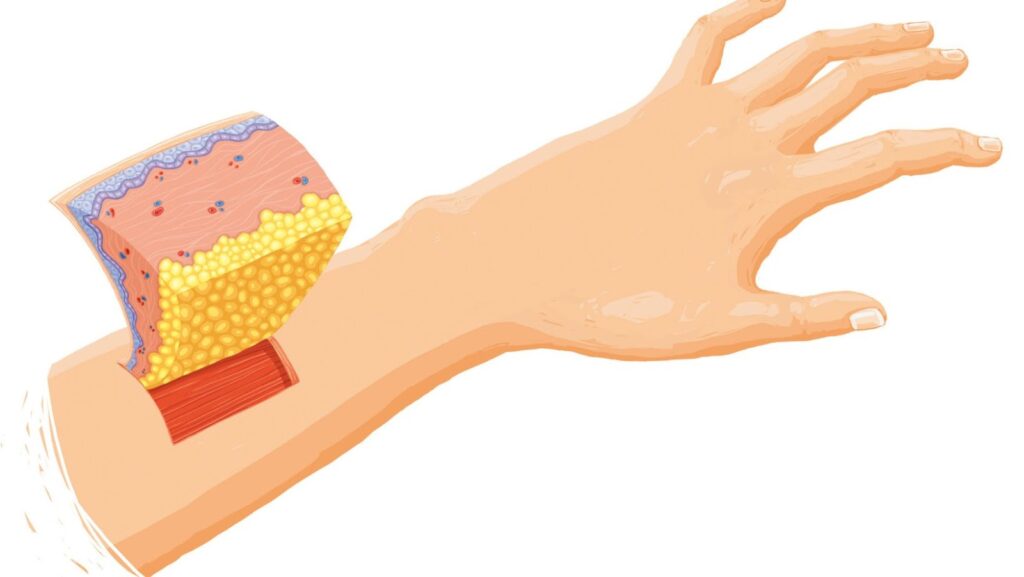Label the Parts of the Skin and Subcutaneous Tissue
Label the Parts of the Skin and Subcutaneous Tissue: A Comprehensive Guide
ABy Ashley Smith•November 21, 2023•14 min read|2644 words•
Labeling the parts of the skin and subcutaneous tissue is an essential step in understanding the structure and function of our largest organ. By familiarizing ourselves with the different components, we gain valuable insights into how our skin protects us and maintains homeostasis.
The skin is composed of several distinct layers, each serving a specific purpose. Starting from the outermost layer, known as the epidermis, it acts as a barrier against external threats such as bacteria, UV radiation, and dehydration. Underneath lies the dermis, housing important structures like blood vessels, hair follicles, sweat glands, and nerve endings. Lastly, we have the subcutaneous tissue or hypodermis that provides insulation and cushioning for our body.
Within these layers are various components that deserve attention when labeling them. For instance, in the epidermis, there are specialized cells called melanocytes responsible for producing melanin pigment that gives color to our skin. Moving deeper into the dermis, we find collagen fibers which provide strength and elasticity to maintain its integrity. Additionally, adipose tissue found in the subcutaneous layer plays a critical role in energy storage and thermal regulation.
Understanding how to label these different parts of our skin and subcutaneous tissue allows us to appreciate their intricate functions. Whether studying dermatology or simply wanting to learn more about our body’s incredible complexity, acquiring this knowledge empowers us to take better care of our skin health.
Functions of the Skin and Subcutaneous Tissue
The skin and subcutaneous tissue play vital roles in our body, serving a variety of functions that are essential for our overall health and well-being. Let’s explore some of these key functions:
Protection
One of the primary functions of the skin and subcutaneous tissue is to protect our body from external threats. Acting as a physical barrier, they shield us from harmful microorganisms, UV radiation, chemicals, and mechanical injuries. The epidermis, the outermost layer of the skin, acts as a protective shield against bacteria and viruses trying to enter our body. Additionally, the subcutaneous tissue provides insulation that helps regulate internal temperature and protects underlying structures like muscles and organs.
Sensation
Our skin is an incredibly sensitive organ that allows us to perceive various sensations such as touch, pressure, pain, temperature, and vibration. This ability to sense stimuli is crucial for our survival as it helps us navigate through our environment safely. Specialized nerve receptors located in different layers of the skin transmit these sensory signals to the brain for interpretation. For example, when we touch something hot or sharp, sensory receptors send signals to our brain instantly so that we can react accordingly by withdrawing our hand or adjusting our posture.
Temperature Regulation
The skin plays a pivotal role in maintaining optimal body temperature through a process known as thermoregulation. When we get too hot or too cold, blood vessels in the dermis dilate or constrict respectively to regulate heat exchange with the environment. Sweat glands present on the surface of our skin produce sweat which evaporates off the surface helping us cool down during periods of overheating or intense physical activity. Conversely, during colder temperatures blood vessels contract reducing heat loss from within the body.
Layers of the Skin
Epidermis
The epidermis is the outermost layer of the skin and serves as a protective barrier against external factors such as bacteria, UV radiation, and chemicals. It consists mainly of specialized cells called keratinocytes, which produce a tough protein called keratin that provides strength to the skin. Within the epidermis, there are several distinct layers:
- The stratum corneum is the topmost layer and is composed of dead skin cells that form a waterproof barrier.
- The basal layer contains actively dividing cells responsible for renewing the epidermis.
Dermis
Beneath the epidermis lies the dermis, a thicker layer that provides structural support to our skin. It contains various components such as collagen fibers, blood vessels, nerve endings, sweat glands, and hair follicles. The dermis plays a crucial role in regulating body temperature through its sweat glands and helps us sense touch through its abundance of sensory receptors. Additionally, it supplies nutrients to the epidermal layers above.
Subcutaneous Tissue
The subcutaneous tissue, also known as hypodermis or superficial fascia, is located below the dermis and acts as an insulating layer for our body. Composed of fat cells (adipocytes) and connective tissues, it helps regulate body temperature by providing insulation while also serving as an energy reserve. The subcutaneous tissue also aids in cushioning our organs from external forces.
Understanding these layers of the skin is essential when it comes to identifying different parts within them. From distinguishing between various types of cells in the epidermis to recognizing sensory receptors in the dermis or adipose tissue in subcutaneous layers – each component contributes to maintaining overall skin health.


